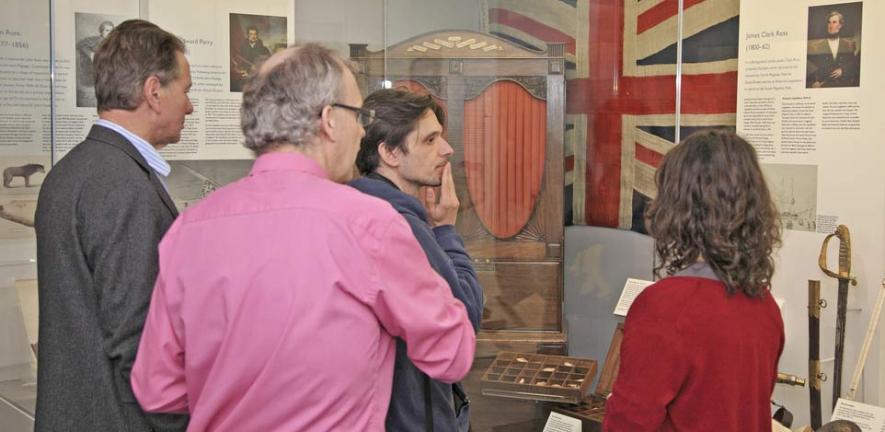
Time is running out in order to cast your vote and make the Polar Museum the Art Fund’s Museum of the Year for 2011.
Time is running out in order to cast your vote and make the Polar Museum the Art Fund’s Museum of the Year for 2011.
Essentially, this is our vision of how to present polar history and science
Heather Lane
The vote closes at 5pm on 7 June 2011, representing the last chance for the public to show their support for the Polar Museum’s bid to win the 2011 Art Fund Prize.
An eighteen-month refurbishment has transformed an almost unknown collection into a world-class museum with a programme of new activities and events. Refitting the museum and archive stores provides better access for researchers to the outstanding objects and manuscripts in one of the University of Cambridge’s smallest museums.
Staff at the Scott Polar Research Institute in the University of Cambridge are delighted to have been shortlisted for the £100,000 accolade celebrating the ‘museum of the year’. The winner will be announced on 15 June 2011 at an awards ceremony hosted at Tate Britain.
Heather Lane, Librarian and Keeper of Collections at the Scott Polar Research Institute said: “We are delighted to have made it to the shortlist. It’s fantastic recognition for all the hard work that the very small team here have put in. Essentially, this is our vision of how to present polar history and science. It’s gratifying to know that other people find what we have done is appealing and enables them to further their knowledge of the subject. Winning the Prize would enable us to plan further ahead and build on what we have already achieved.”
Winning the £100,000 Prize would make an enormous difference to the Polar Museum, funding Education and Outreach work for the next three years. It would significantly increase the budget the museum could make available for education activities, helping to develop programmes for an even wider audience. The Prize would be used to expand resources for schools and communities, not only in the galleries, but also developing web-based projects and making better use of new technology. Audience numbers have tripled to 45,000 visitors a year since the museum reopened in June 2010 after a £1.75 million refurbishment, funded in part by the Heritage Lottery Fund.
Polar history and science are a vital part of the UK’s cultural heritage and the stories of British exploration in the Arctic and Antarctic are a part of our shared national identity – the stories of Scott and Shackleton have been an inspiration for a century. The Polar Museum now enables visitors to learn why the Poles are significant in the global environment and shows how the science carried out on the early expeditions is fundamental to our understanding of the way in which the world’s climate is changing. Without those early records, SPRI’s scientists would not be able to produce such accurate models and forecasts today. With such interest in the environment, a visit to the Polar Museum is a great way to encourage the next generation of young scientists to get involved.
This work is licensed under a Creative Commons Licence. If you use this content on your site please link back to this page.

